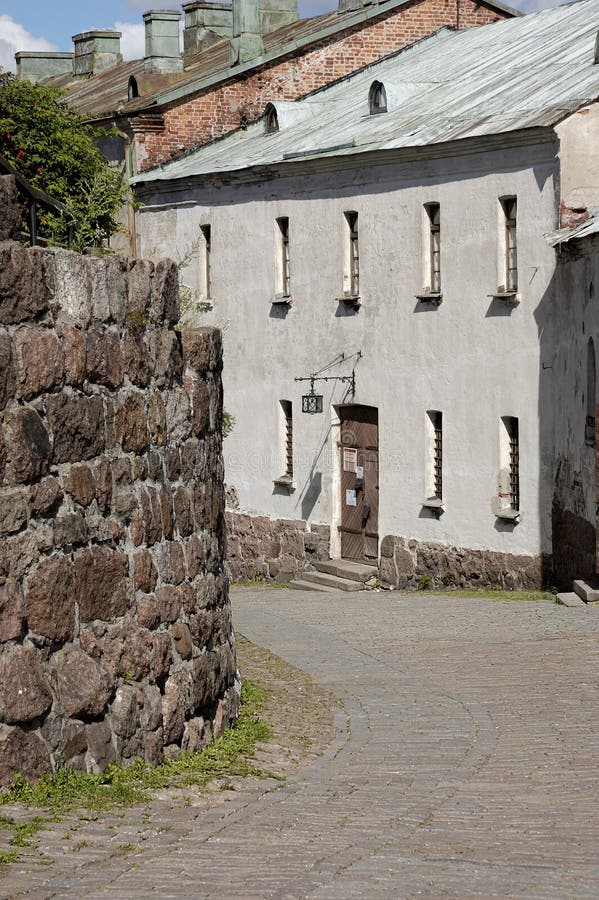Table Of Content

Furniture consisted of cupboards, to display gold and silver plates and goblets, and imported pottery. Buffets held dishes of everyday use and tinware, while benches, and sometimes chairs, provided places to lounge on. These may have been made comfier with the assistance of embroidered cushions.
FAQs about Medieval Manor Houses

Although the church building is located away from houses today, evidence of medieval housing has been uncovered close to the church. Parish feasts would have been prepared and served here with the profits going to the church for funding. The rounded arch entrances and Gothic windows set into rounded arch openings suggest a Romanesque origin and later Gothic remodel. Medieval architecture changed throughout the centuries as building materials and the purpose of use of the buildings changed. Styles and appearance of buildings that were designed for religious, social, or residential purposes adapted and displayed different characteristics as the centuries passed. In the later medieval period, in particular, after the Black Death of 1384 killed a large portion of the population, there weren’t enough people to work the fields.
Central Europe
The accounts and estimates of the current structures have been passed through oral records and examples. Medieval houses, constructed in diverse styles based on owner status and location, were typically two-storied timber structures, offering space for livestock, work, and comfortable living. Reflecting a simple and minimalistic lifestyle, these historical dwellings continue to captivate our fascination today, providing a glimpse into the lives of 5th-century inhabitants.
Sam's Castle
They had thatched roofs and were often single-room dwellings with a central hearth for cooking and heating. Travel back in time to the enchanting world of medieval houses and uncover the unique characteristics, architectural styles, and historical significance of these captivating structures. From the humble peasant cottages to grand manor houses, these buildings are steeped in cultural heritage and offer a glimpse into a bygone era. Join us on a journey of discovery through the fascinating history of medieval houses. In England in the 11th century the manor house was an informal group of related timber or stone buildings consisting of the hall, chapel, kitchen, and farm buildings contained within a defensive wall and ditch.
The Enduring Legacy of Medieval Houses
Its layout proved to be so useful that – centuries after the end of the Middle Ages – they remain popular around the world. Another manuscript that offers an interesting look at the interior of a peasant’s house is the Hours of Catherine of Cleves, which was made by the year 1440 by a Dutch artist. It has over 150 images in the work, two of which depict the Holy Family – Mary, Joseph and Jesus as a baby – within their home. They would have been depicted as a humble family, so it would have been appropriate that their home would emulate that of a peasant or lower-class household. Middle Ages butchers prepared meat, fish, and fowl for the people in a castle or a city. The second floor sometimes had a pergola, or a roofed passage with a staircase going down to the courtyard or the street.
The country house with lost Medieval villages and a former military hospital in its grounds - Cambridgeshire Live
The country house with lost Medieval villages and a former military hospital in its grounds.
Posted: Sun, 28 Apr 2024 04:09:00 GMT [source]
Equally paramount was the location, which played a pivotal role in dictating the materials used and the ultimate design of the house. Resource availability, both in terms of raw materials and skilled craftsmen, was intrinsically tied to the locale, giving each region its unique architectural fingerprint. For the more massive structures or where stones were used extensively, more substantial equipment came into play. Treadwheel cranes, powered by men walking inside a large wheel, helped lift heavy stones.
With fewer laborers, nobles raised wages for menial jobs, elevating the living standards of the remaining peasant class during the later Medieval period. The houses became more sophisticated, with multiple rooms, separate living and sleeping areas, and even upper floors. The use of stone and bricks in construction also became prevalent, giving the houses greater durability and strength. What once started as a regular, ranch-style log cabin is now a fairytale castle fit for any prince or princess. Lobo Castle is located in Lobo Canyon and sits on two and a half acres of property.
They were also heavily fortified, with thick walls, towers, and moats designed to protect their inhabitants from attack. The medieval era didn’t have the luxury of transporting materials over vast distances. Thus, the immediate environment dictated the primary materials for house construction. Timber, if available, was a popular choice due to its versatility and ease of use. Thatch, made from straw or reeds, was a common roofing material, especially in rural areas, while slate or tiles adorned the roofs of more affluent homes or those in slate-rich regions. Amidst towering cathedrals and formidable castles, the medieval house held its own unique allure.
Harlech Castle
Medieval architecture was the art of designing and constructing buildings in the Middle Ages. The Renaissance marked the end of the medieval period, when architects began to favour classical forms. Timber, abundant in many regions, became the backbone of many a medieval dwelling. Its versatility allowed for both framework and finer details, such as decorative carvings. Wattle and daub (a network of woven wooden strips covered with clay or mud) was a popular method for filling in walls, ensuring insulation and sturdiness. In areas rich in stone, houses took on a more durable and imposing appearance, standing resilient against both time and adversaries.
Outside, in the foreground two peasants work zealously; one chopping, the other gathering firewood. This house is solid and suggests a relatively comfortable living accommodation. The gable wall which is visible contains a doorway; it is half timber construction with timber posts used to frame the corners, the doorway opening, the crossbeam of the ceiling and the gable above. Some of the timbers used have been hewn; others, probably intended as replacements for damaged posts, remain in their natural state.
40 best Minecraft house ideas and designs (April 2024) - Sportskeeda
40 best Minecraft house ideas and designs (April .
Posted: Sun, 07 Apr 2024 07:00:00 GMT [source]
In conclusion, the medieval house was an essential part of life during the Middle Ages. Whether it was a grand manor house or a humble vernacular house, the medieval house was designed to meet the needs of its occupants and provide shelter, security, and storage. Early Medieval houses were simple, with two rooms, limited ventilation, and small windows. Later Medieval noble houses were more extravagant, featuring a mix of timber and brick construction, tiled roofs, chimneys, and glass windows on two stories. Whether we are admiring the Tudor houses of England, the half-timbered houses of Germany, or the châteaux of France, medieval houses continue to captivate us with their charm.
The walls were made from timber or wattle and daub, with a thatched or tiled roof. Medieval houses have captured the imagination of people for centuries, enchanting us with their unique architectural styles and historical significance. From the humble peasant cottages to the grand manor houses of the aristocracy, medieval houses offer a glimpse into a bygone era that continues to inspire us today. The medieval period saw a significant shift in the way people lived, and the houses they inhabited reflect this change. The feudal system played a crucial role in shaping the design and layout of the houses.

The invention of a building style called wattle-and-daub enabled peasants to build better houses. Wattle and daub is made up of interwoven twigs that are then cladded with mud and sun-baked until hardened. It was a simplified, more accessible precursor to the hardier bricks made of rarer substances that would become a sign of wealth in late Medieval buildings. The architecture, design, and budget of the noblemen or royals that commissioned the building of their castles determined the time it took to complete the construction. The building of the castle could take anywhere from two to twenty years depending on the materials, design, number of workers–and consistency of funding. This church in Estonia (it has marvelous castles too) was founded by the master of the Livonian Order, Otto von Luttenburg, in 1267.
There would have also been grand bed chambers, also richly decorated, for the lord of the manor. Generally, they included a great hall, which was used as the primary administrative and ceremonial room in the building. Manor houses were primarily luxurious living spaces, and therefore they varied hugely in size and appearance. Manor houses were therefore symbolic of the system of feudal manorialism and helped to establish and reinforce that system. Manor houses were therefore largely made up of luxurious rooms and bed chambers, not only to house the lord’s family but also to receive guests.
By day, it might serve as a workspace or market stall, and by night, a communal area for storytelling or sharing meals. These interactions, centered around the home, were the threads that wove tight-knit medieval communities, proving that the influence of a house extended well beyond its walls. For instance, in some regions, a house with a grand fireplace and multiple chimneys signified prosperity, as it suggested the owners could afford the luxury of separate rooms with individual hearths. Similarly, homes with glazed windows or ornate carvings were indicative of a household with considerable means.
They serve as a testament to the ingenuity and creativity of our ancestors, inspiring us to appreciate the rich cultural heritage that surrounds us. These famous medieval houses provide a glimpse into the past and serve as a testament to the enduring legacy of medieval architecture. Their significance, both architecturally and culturally, is not to be underestimated.

No comments:
Post a Comment